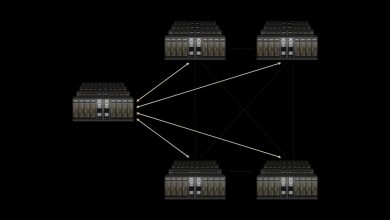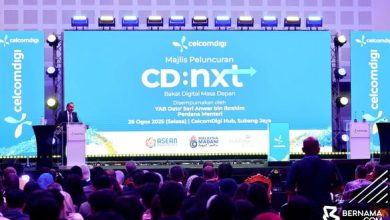Wi-Fi 7: It’s Faster, Smarter, and Safer for Business
As businesses face growing network demands, RUCKUS’ Wi-Fi 7-ready solutions deliver speed, intelligence, and security to support future-proof digital experiences

Everyone’s talking about faster Wi-Fi, but speed alone isn’t the full story. Networks nowadays must do more than move data quickly. They need to be reliable, resilient, and smart enough to adapt to ever-changing demands. As the next generation of wireless technology, Wi-Fi 7 offers the technical foundation for all of that, but the real pushing factor here is how businesses deploy and manage it.
What Makes Wi-Fi 7 More Than Speed
Wi-Fi 7, also known as IEE 802.11be, builds on the groundwork laid by Wi-Fi 6 and 6E, offering up to 46 GBs per second in theoretical speed, more than quadruple the maximum speed of Wi-Fi 6. It introduces 320 MHz channel bandwidths, 4096-QAM for denser data encoding, and Multi-Link Operation (MLO), which allows devices to use multiple frequency bands simultaneously, as explained in RUCKUS’ studies.
These features not only enable faster connectivity, but more stable and lower-latency experiences. That makes a critical difference in real-world scenarios such as videoconferencing, virtual classrooms, enterprise applications, and even cloud gaming.
But a high-performance protocol is only part of the picture. The challenge lies in translating these technical gains into meaningful business outcomes. Hence, it’s not just about performance on paper, but also about reducing downtime, simplifying network operations, and maintaining user experience in high-demand environments.
The industry estimates that over one billion devices already support 6 GHz Wi-Fi, and the Wi-Fi Alliance expects Wi-Fi 7 to be rapidly adopted across various business operations, with more than 2.1 billion devices projected to ship by 2028.
This influx of capable devices places immense pressure on existing infrastructure, particularly in sectors like education, hospitality, and public venues where user density and bandwidth requirements can spike unpredictably.
Why Network Intelligence Matters
Here, the network infrastructure’s intelligence matters as much as its speed. For instance, RUCKUS Networks, part of CommScope, has launched Wi-Fi 7-ready solutions such as the RUCKUS R770 access point, complemented by its cloud-native RUCKUS One management platform.
While Wi-Fi 7 brings the raw speed and low-latency capabilities, RUCKUS One leverages AI and machine learning to manage, monitor and optimise network performance across multiple sites.
One of the most critical advancements lies in automated service assurance. Rather than waiting for users to report issues, access points under platforms like RUCKUS One can act as virtual clients to detect disruptions in real time, running tests across WLAN, LAN, WAN, and application layers.
Combined with built-in Artificial Intelligence for IT Operations (AIOps), network teams get root-cause analyses, performance recommendations, and real-time alerts, reducing response time and cutting down on service degradation.
In a world where IT teams are stretched thin, automation and AI-led diagnostics have become more demanding than ever. The RUCKUS platform helps to prioritise incidents based on severity, streamlining decision-making and allowing quicker resolution of service-affecting issues.
Futureproofing in a High-Density World
Apart from intelligence, security also sees a major uplift in Wi-Fi 7 deployments. The standard builds upon WPA3 encryption with stronger protections against dictionary attacks and introduces more robust device authentication.
Upon introducing this advancement, RUCKUS Networks explained that the latest encryption method is more similar to 802.1X standards, making it much harder to crack either in the wild or offline using a brute force encryption cracker server custom-built for the task at hand.
Security alone is not the only futureproofing value of adopting Wi-Fi 7. The issue with legacy Wi-Fi 5 or Wi-Fi 6 APs is that without full support for 6 GHz clients, they create a bottleneck as device capabilities outpace infrastructure.
By contrast, Wi-Fi 7 APs offer full backward compatibility while maximising performance for current and upcoming devices. For organisations eyeing long-term ROI, that matters.
The ability to support more simultaneous clients per AP is crucial for environments such as university campuses, stadiums, or even multi-dwelling units. RUCKUS APs reportedly support up to 50% more devices than typical alternatives, significantly resulting in fewer dropouts, faster speeds and reduced need for costly network expansion.
Building Smarter and Safer Networks
In sum, Wi-Fi 7 is more than just a new protocol. It’s a foundational shift in how wireless connectivity can support business goals. But to extract its full value, organisations need more than new access points. They need smart, scalable, and secure management layers that turn high-performance potential into everyday reliability.
With the right infrastructure choices, Wi-Fi 7 can meet the high demands of transitioning business operations not just in terms of speed, but also a smarter and safer network for all. To learn more about how Wi-Fi 7 could reshape your business connectivity, visit RUCKUS Networks’ Wi-Fi 7 page.
Wi-Fi 7 is a leap forward—but is your current network infrastructure ready to keep up? Take this quick, intelligent assessment to find out. In just 2 minutes, you’ll get a snapshot of your network’s strengths, weaknesses, and where you can unlock more value.





